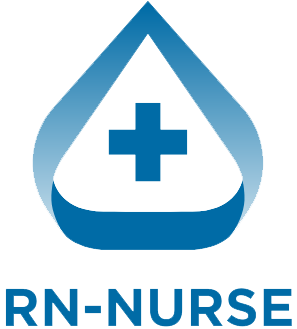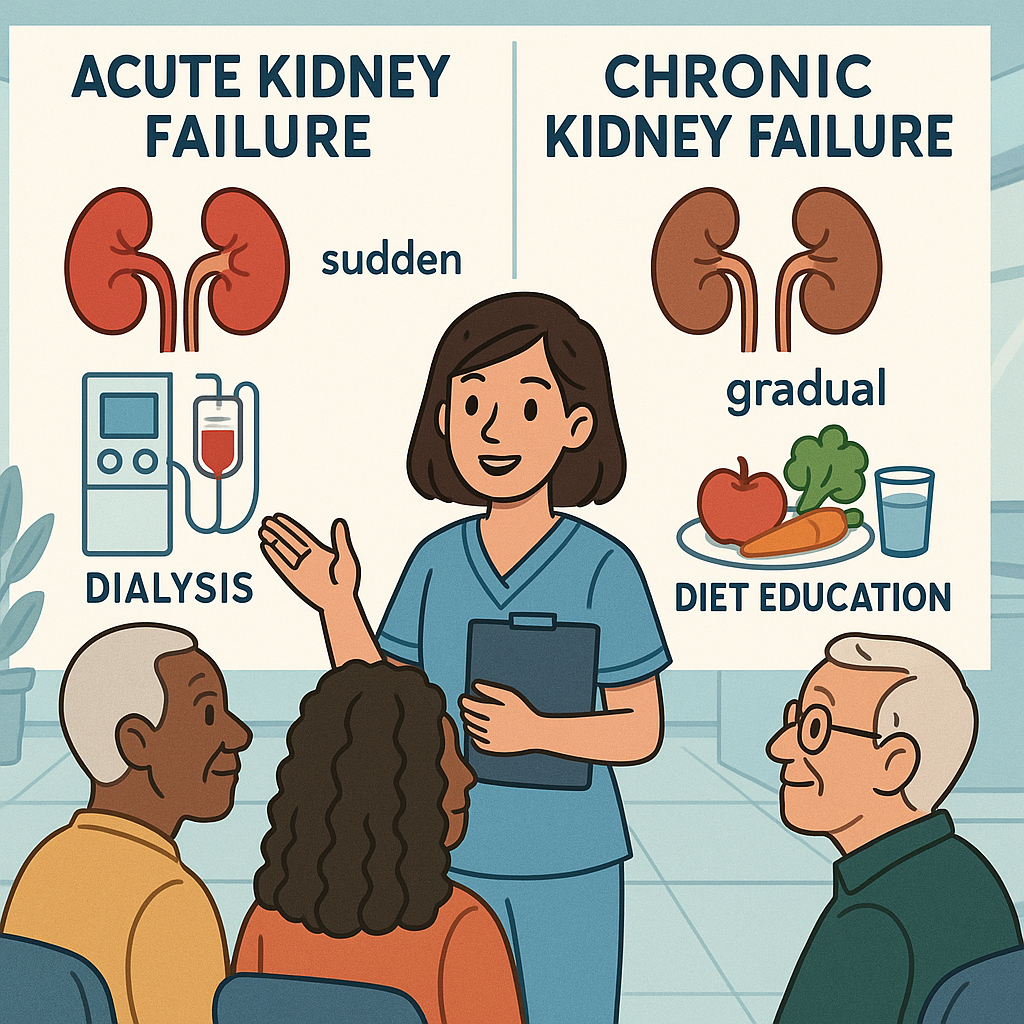Renal failure is a critical topic every nurse must understand — whether you’re studying for the NCLEX, adding to your nursing bundle, or working as a registered nurse (RN nurse) in a clinical setting. Kidney failure impacts every organ system, making early recognition and intervention crucial.
This simplified crash course will help you easily remember the key differences between acute renal failure (ARF) and chronic kidney disease (CKD), along with nursing priorities and interventions.
🩺 What is Acute Renal Failure?
Acute Renal Failure (ARF), now often called Acute Kidney Injury (AKI), is a sudden and usually reversible loss of kidney function.
Causes:
✅ Hypovolemia (low blood volume)
✅ Sepsis
✅ Nephrotoxic drugs (e.g., NSAIDs, aminoglycosides)
✅ Urinary obstruction
Pathophysiology in simple terms:
- Sudden drop in perfusion to the kidneys
- Kidneys cannot filter waste
- Buildup of toxins
- Fluid and electrolyte imbalances
🔎 NCLEX Nursing Focus for ARF
- Monitor urine output (less than 30 mL/hr is a red flag)
- Watch for hyperkalemia and acidosis
- Fluid balance is a priority
- Identify and treat the cause (e.g., fluid resuscitation for hypovolemia)
- Prepare for possible dialysis
🩺 What is Chronic Kidney Disease?
Chronic Kidney Disease (CKD) is a progressive, irreversible decline in kidney function lasting more than three months.
Causes:
✅ Diabetes (leading cause)
✅ Hypertension
✅ Polycystic kidney disease
✅ Chronic glomerulonephritis
Pathophysiology simplified:
- Long-term damage to nephrons
- Loss of filtration ability
- Toxins build up gradually
- Fluid overload, electrolyte imbalances, anemia
🔎 NCLEX Nursing Focus for CKD
- Monitor fluid overload (edema, lung crackles)
- Watch labs for high potassium, low calcium, high phosphate
- Prepare for renal diet teaching (low sodium, low potassium, limited fluids)
- Support long-term dialysis education
- Provide emotional support for lifestyle changes and possible transplant options
🧩 Differences at a Glance
| Feature | Acute Renal Failure | Chronic Kidney Disease |
|---|---|---|
| Onset | Sudden | Gradual over months/years |
| Reversible? | Often reversible | Usually irreversible |
| Common Cause | Hypovolemia, toxins, infection | Diabetes, hypertension |
| Urine Output | Sudden drop | May be normal until later stages |
| Dialysis | Temporary | Often permanent |
🩺 Nursing Priorities
Every registered nurse and RN nurse should remember these renal priorities:
✅ Daily weights to monitor fluid status
✅ Strict I&O
✅ Monitor electrolytes (especially potassium and calcium)
✅ Avoid nephrotoxic medications
✅ Provide skin care for dry, itchy skin in CKD
✅ Collaborate with the renal team for dialysis
🧠 Simplified Memory Tips
💡 ARF = A = Acute = Abrupt
💡 CKD = C = Chronic = Continuous Damage
These quick mnemonics are perfect to add to your nursing bundle and are high-yield for the NCLEX.
👩⚕️ Patient Education
For ARF patients:
- Report any decrease in urine output
- Follow fluid restrictions
- Avoid NSAIDs
For CKD patients:
- Low-protein, low-sodium, low-potassium diet
- Adhere to dialysis schedules
- Understand medication changes
- Monitor blood pressure
📌 Key Takeaways
✅ ARF is sudden and potentially reversible.
✅ CKD is progressive and irreversible.
✅ Nurses must monitor fluid, electrolytes, and labs closely.
✅ Patient education is essential to prevent complications.
✅ Add these tools to your nursing bundle to pass the NCLEX with confidence.

